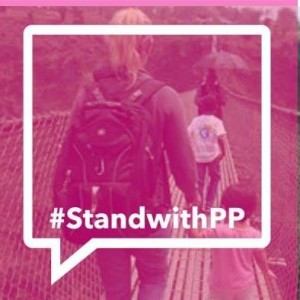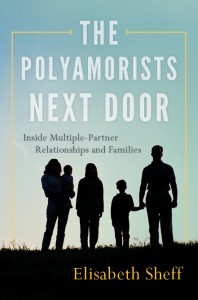This month’s column features our first guest-post from Liz Borkowski, MPH. Liz is the managing editor of Women’s Health Issues and a researcher at the George Washington University Milken Institute School of Public Health. She focuses on reproductive health, paid leave, and US health policy, and is a regular contributor to the public health blog The Pump Handle.
__________
What’s the best way to help lesbian and bisexual (LB) women lose weight, when their communities may question the very goal of weight loss? That’s a question behind the “Healthy Weight in Lesbian and Bisexual Women: Striving for a Healthy Community” (HWLB) initiative. The answer they came up with was to focus the program on physical activity and nutrition, rather than numbers on a scale. Their findings suggest that this can be an effective approach for helping lesbian and bisexual women adopt healthier habits. Nearly all (95%) of participants achieved one or more of the health objectives, which included nutrition and physical activity goals as well as weight reduction. That included 57% of participants increasing their weekly physical activity minutes by 20% – habits that, if sustained, could contribute to years of improved health.
The Women’s Health Issues supplement about the study contains lessons for healthcare providers who serve lesbian and bisexual women. As Natalie Ingraham and her colleagues explain in an article about provider interventions, lesbian and bisexual women may not disclose their sexuality to providers who seem to presume heterosexuality; lack of disclosure can lead to inadequate care. Weight bias can also be common among healthcare providers:
“…stigma and discrimination related to sexual orientation and gender identity may be compounded by stigma related to weight and body size.”
To address this, the researchers developed and evaluated two curricula for providers to enhance their ability to provide high-quality care to LB “women of size” (overweight or obese). Focus group participants explained that they wanted providers’ help in overcoming barriers to healthy habits, not providers making them feel shamed or blamed for their weight. Based on this feedback and prior studies, the team developed two curricula that involved cultural competency training and motivational interviewing (MI) techniques:
“Rather than trying to convince clients to change, providers trained in MI elicit arguments for change from the clients themselves…These techniques help clients to explore and resolve ambivalence, develop self-efficacy, and set personal goals.”
The team pilot tested the “academic format” training with physicians, residents, and medical students at universities in Washington, DC and Nashville, Tennessee. They pilot tested the “clinic format” training with staff and providers at Lyon-Martin Health Services, a Program of HealthRight360, which provides care to LGBT clients in the San Francisco Bay Area. Ninety-six participants completed tests before and after the trainings; results showed the most change on questions about patient-provider interactions and LB women’s avoidance of care.
Specifically, after the trainings, more participants (correctly) agreed with the statements “Lesbians and bisexual women may avoid health care because they don’t trust the practitioner to be culturally competent” and “Overweight and obese women often delay or avoid health care if they feel their health care provider holds a bias against women who are large.” More participants also (correctly) disagreed with the statement “Physicians/nurses should always instruct their overweight/obese patients to lose weight.” There was also more (correct) agreement with this statement, which encapsulates what providers can do to help overweight clients:
“Patients who are advised by their physician how to modify their behavior to lose weight are more likely to lose weight than those who do not get this advice.”
While the authors of this article note the need for additional research on these curricula – including studies to see whether they improve clinical practice – their findings, combined with the findings of the overall HWLB study, have some clear implications. Instead of instructing all overweight or obese lesbian and bisexual patients to lose weight, providers should offer advice on adopting healthier behaviors. It is key that this advice be presented in ways that don’t contribute to stigma on the basis of larger size or sexual orientation. To better serve lesbian and bisexual patients, health care providers should familiarize themselves with cultural norms and problematic stigmas that LB women may face. Then, during patient interactions they should make sure to sensitively include “open and positive acknowledgement of sexual orientation.”








